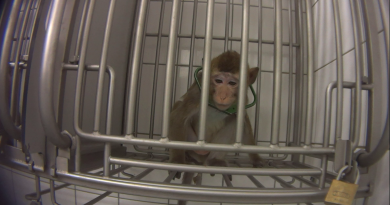European Pharmacopoeia to Put an End to the Rabbit Pyrogen Test
Image by Image by อาทิตย์ สิงห์นาครอง from Pixabay
Article by Center for Alternatives to Animal Testing (CAAT), July 12, 2021
NOTE: The whole blood pyrogen test was invented by Thomas Hartung 25 years ago—and its variant, based on cryo-preserved blood one year later—brought momentum into the field of pyrogen testing, which, despite the broad application of the Limulus amebocyte lysate (LAL) assay, aka bacterial endotoxin test (BET), consumed several hundred thousand rabbits per year world-wide.
For context, please see Thomas Hartung’s paper, “Pyrogen testing revisited on occasion of the 25th anniversary of the whole blood monocyte activation test” (ALTEX).
Hartung, T. (2021) “Pyrogen testing revisited on occasion of the 25th anniversary of the whole blood monocyte activation test”, ALTEX—Alternatives to animal experimentation, 38(1), pp. 3-19. doi: 10.14573/altex.2101051.
•••••
At its 170th session in June 2021, the European Pharmacopoeia (Ph. Eur.) Commission took the decision to engage on a path that should ultimately lead to the complete replacement of the rabbit pyrogen test (RPT) in the Ph. Eur., within approximately 5 years.
The Ph. Eur. test for pyrogens (general chapter 2.6.8) consists of measuring the rise in body temperature evoked in rabbits by the intravenous injection of a sterile solution of the substance to be examined. It was first published in the Ph. Eur. in 1986.
The majority of pyrogens are bacterial endotoxins and these can be detected using the bacterial endotoxins test (BET) described in Ph. Eur. general chapters 2.6.14. Bacterial endotoxins and 2.6.32. Test for bacterial endotoxins using recombinant factor C. However, in some cases, non-endotoxin pyrogens may also be present and these are not detected by the BET. A test covering all types of pyrogens is therefore required to confirm the absence of non-endotoxin pyrogens.
General chapter 2.6.30. Monocyte-activation test (MAT) was added to the Ph. Eur. in 2009, providing an in-vitro alternative to the RPT that is capable of detecting both endotoxin and non-endotoxin pyrogens. The publication of this chapter was a significant step forward in terms of animal welfare, in accordance with the Council of Europe’s European Convention for the Protection of Vertebrate Animals used for Experimental and Other Scientific Purposes.
However, despite multiple efforts since then to encourage developers to apply the MAT instead of the RPT, rabbits continue to be used extensively to detect pyrogenic substances.
There are currently 59 Ph. Eur. texts—covering a variety of topics including vaccines for human use, blood products, antibiotics, radiopharmaceuticals and containers—that refer to the RPT and will be affected. The Ph. Eur. is committed, for all these texts, to replacing the test for pyrogens with a suitable in-vitro alternative, ultimately leading to the complete elimination of the RPT. In the meantime, users are actively encouraged to seek alternatives to chapter 2.6.8, the best option being the MAT.
Throughout the process, users will have the opportunity to comment on a case-by-case basis, since each of the texts concerned will go through the standard public enquiry in Pharmeuropa.
Link (Council of Europe)
Video: Thomas Hartung in “What’s Next? The World of Endotoxin
Thomas Hartung appeared in the recent episode of “What’s Next? The World of Endotoxin.” Hartung is the the pioneer of the Whole Blood Monocyte activation test.
Hartung and Albrecht Wendel suggested the Whole Blood Pyrogen test in the mid 90s to replace the Rabbit Pyrogen Test. And good news: last week the EDQM officially took the decision to completely replace the rabbit pyrogen test over the next 5 years.




